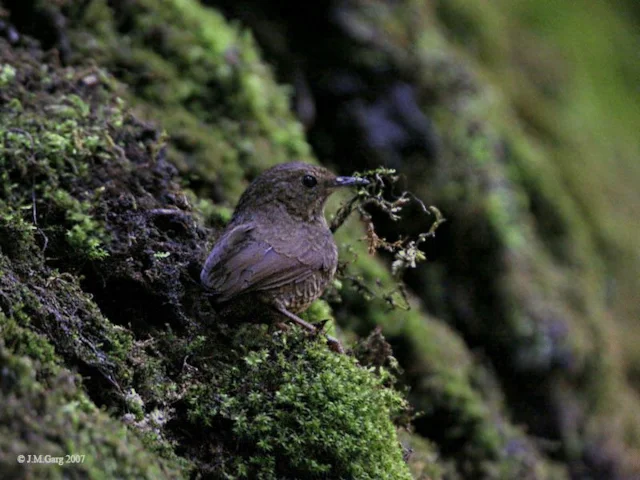 BirdingASIA has just published a summary of suggestions for taxonomic changes in Asia. The paper not only discusses splits at species level, but also a new family, and stresses that not all will be adopted by the Oriental Bird club as yet.
BirdingASIA has just published a summary of suggestions for taxonomic changes in Asia. The paper not only discusses splits at species level, but also a new family, and stresses that not all will be adopted by the Oriental Bird club as yet.
Following Geland et al (2009), a new family has been created for the 'wren babblers' of the genus Pnoepyga, the Pnoepygidae. Molecular analysis has shown that these small superficially pitta-like birds are unrelated to the babblers and recommend that they deserve a new English name too, though concrete suggestions for this are as yet unforthcoming.
Yellow-bellied Fantail has been moved to the fairy-flycatcher family Stenostiridae, and recommended as being renamed Yellow-bellied Fairy-flycatcher Chelidorhynx hypoxantha, removing it from the genus Rhipidura.
Two recently discovered passerine species are also included, Bare-faced Bulbul Pycnonotus hualon and Limestone Leaf Warbler Phylloscopus calciatilis. 'Northern Little Owl' Athene plumipes from China and Mongolia is a suggested split from our familiar species, due to the former showing a distinct lineage in a multiple species, two-gene owl phylogeny conducted by Wink et al (2009).
The Great Grey Shrike and stonechat complexes are acknowledged, with the authors mentioning that the Asian Lanius taxa L borealis, L excubitor, L lahtora, L sphenocercus and L (sphenocercus) giganteus are all distinct from specifically distinct from each other. White-tailed Stonechat Saxicola leucurus has its specific status threatened, as an incomplete study suggests that is part of the familiar S torquata clade.
Several species are also shored up by recent research, and many splits from recent books are also included.
For the complete summary and references see: Inskipp, T P, Collar, N J and pilgrim, J P. 2010. Species-level and other changes suggested for Asian birds, 2009. BirdingASIA 14: 59-67.
More Asian splits on their way?
6417ee4d-af41-40cb-8d03-ec0d54bf1254


